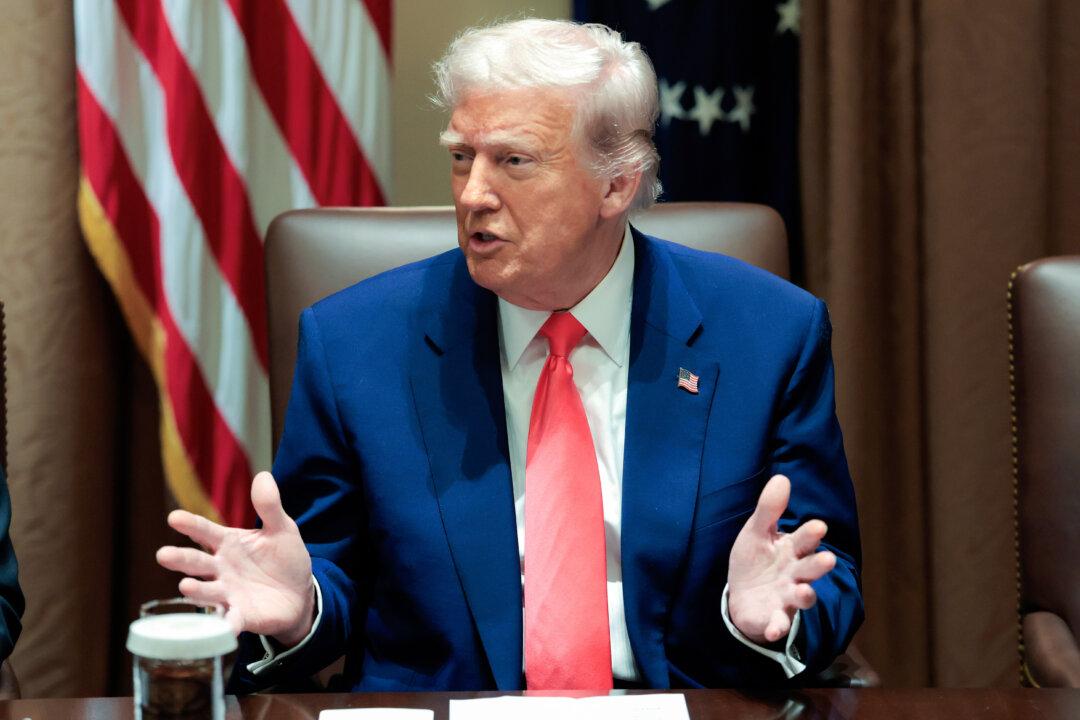President Donald Trump has offered his support for the “lock the clock” movement.
Trump’s comments came a day after a bipartisan group of lawmakers conducted a hearing on making daylight saving time permanent.
Daylight saving time was initially a World War I strategy to reduce energy consumption in the evenings.
According to Commerce Committee Chairman Ted Cruz (R-Texas), however, energy efficiency and technological advancements show that currently, the hour change no longer has cost-saving benefits.
“Congress has the authority to end this outdated and harmful practice. This hearing is an excellent opportunity to examine a thoughtful and rational approach to how we manage time,” Cruz said in his opening remarks.
“Whether we lock the clock on Standard Time year-round or daylight saving time, let’s put our health, the economy, and well-being first and embrace a sensible approach to time management.”
The senator spoke to the committee, encouraging quick action on the bill.
Scott called the time change “confusing, unnecessary, and completely outdated.”
“We have a great opportunity to finally get this done with President Trump on board to lock the clock,” Scott said.
Hearing witnesses included representatives from the Insurance Institute for Highway Safety, the American Academy of Sleep Medicine, the National Golf Course Owners Association, and the Lock the Clock Movement.
All of the testimony provided supported ending the twice-yearly time change, citing health, safety, and economic concerns.
While there is widespread support for locking the clock, not everyone agrees on where it should be frozen.
Expert Opinions
Trump has voiced his support for more daylight at the end of the day, making daylight saving time the likely model going forward.The same schedule was promoted by Jay Karen, CEO of the National Golf Course Owners Association, who testified about the economic impact of the changing clocks on the golf industry.
Karen emphasized the benefits of additional daylight for outdoor recreation, saying that making standard time permanent would cost the golf industry an estimated $1.6 billion in annual revenue.
“Trading [time] backward would cost the average public golf course at least seven to eight percent of their annual revenue by removing the best inventory we have from on our shelves, which is approximately 37 million rounds of golf,” Karen said.
Dr. David Harkey, the president of the Insurance Institute for Highway Safety, testified about the road safety implications of the time change to daylight saving time, saying that the change was associated with an increased risk of fatal crashes.
Harkey noted that while adjusting the clock doesn’t increase the number of daylight hours, it can change how those hours align with work and school schedules.
“The clearest takeaway from the Insurance Institute for Highway Safety’s research is that there is a strong relationship between increased darkness and fatal crashes, particularly for pedestrians and bicyclists,” he said.
Dr. Karen Johnson, a practicing sleep medicine physician and representative of the American Academy of Sleep Medicine, cited evidence of the negative health impacts of changing the clocks, including an increased risk of chronic disease, depression, and suicide.
“Permanent standard time would get more Americans to get the opportunity to improve their sleep without even trying,” Johnson said.
“The sun is one of the most powerful drivers of health and well-being, but the timing of sunlight is what’s critically important.”
Johnson strongly advocates for permanent standard time, saying that daylight saving time would deprive Americans of critical morning light and that while the spring clock change is bad, “permanent daylight saving time is worse.”
“Permanent daylight saving time does not make days longer, nor is it the reason why people feel better in the summer,” Johnson said.
“Instead, permanent daylight saving time is a hidden mandate to wake Americans up an hour earlier, rather than to their alarm clocks or the sun.
“If we called it the ‘Go to Work An Hour Earlier Act,’ rather than the ‘Sunshine Protection Act,’ no one would be voting for it.”
Scott Yates, the founder of the Lock the Clock Movement, testified to a number of negative repercussions attributed to the yearly time changes, including sentencing for convicted offenders.
A 2016 study by researchers at the University of Washington found that sentences handed down over an 11-year period found that the day after the March daylight saving time change, referenced as “sleepy Monday,” was the harshest sentencing day of the entire year.
Public Opinion
A January Gallup poll showed that 54 percent of Americans are ready to abolish daylight saving time, 40 percent of adults say they’re in favor of it, and another 6 percent are uncertain.The poll was the first time Gallup has measured public opinion on the practice in more than 25 years.
In 1999, a whopping 73 percent of Americans favored the March time change, which was a small change from nine years earlier in 1990, when 74 percent supported the practice.
Another 35 percent were amenable to the twice-yearly change.
His bill also enjoyed bipartisan support from a group of senators from Oklahoma, Alabama, Massachusetts, Minnesota, Florida, Mississippi, and Oregon.
In his push for the legislation, Rubio offered several similar arguments to those found in the current debate and also cited a 2015 report by the Brookings Institution indicating that a potential benefit of permanent daylight time is decreased robberies due to the additional daylight in the evenings.
While daylight saving time was first introduced during World War I, it was amended in 2005 when Congress extended it so it would start on the second Sunday in March and terminate on the first Sunday in November instead of the initial six-month mandate.
As a result, there are currently eight months of daylight time in the United States and only four months of standard time.
The United States has experienced year-round daylight saving time in two periods: from 1942 to 1945 and from 1974 to 1975.







